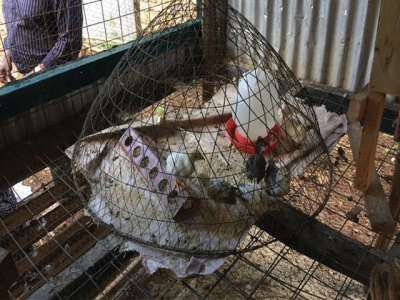How to increase African egg production, consumption

Addressing issues at production and consumption levels is needed if the supply of eggs in Africa is to be increased.
Lack of good practice and facilities for new chicks leads to higher levels of mortality. | Dr. Vincent Guyonnet
While Africa is home to 16.4 percent of the world’s population, its egg production represents only 4.4 percent of global production and, with little trading of shell eggs between continents, local or regional production of eggs must meet the majority of demand. This huge imbalance translates into an average annual consumption of only 44 eggs per person in Africa, compared with 189 eggs for the rest of the world.
According to data from the Food and Agriculture Organization, per capita egg consumption in 1961 was comparable between Asia (28) and Africa (22). Today, however, consumption in Asia, at 166 per person, is almost six times that in Africa, at only 44. Could this Asian success be repeated on the African continent?
In Africa, village poultry production still represents the majority of the chickens raised and provides 70-90 percent of poultry meat and eggs consumed. Smallholder farmers remain the main providers of eggs, and they face multiple challenges.
A possible model
There are various ways, however, that the difficulties facing African egg producers can be overcome.
A more formal and intensive way to raise pullets has been used in Zimbabwe and elsewhere to help smallholder farmers maximize their returns from egg production.
Birds are raised until point of lay in large units -- at least 5,000 birds -- and sold by 5, 10 or 20 hens at a time.
The financial risks are significantly reduced for the smallholders, who are able to generate some income right away and use some eggs for their nutritional needs. In conjunction with the development of the more intensive sector in Africa, a more widespread rearing of pullets by specialized growers for the benefit of smallholder farmers could increase the production of eggs in Africa.
It’s worth remembering that China became the largest egg producer in the world with a multitude of smallholder farmers and that even today, the current average flock size is around 5,000 hens per farm.
Obstacles to overcome
Issues facing egg production in Africa exist at producer and consumer level.
High mortality rates, averaging 20-30 percent, and reaching as high as 50 percent, even before birds are able to lay their first eggs, discourages many smallholder farmers.
Mortality is not only due to diseases but also to the lack of good management practices, such as keeping chicks warm enough during the first two to three weeks or safe from predators.
Feeds are also an issue, in terms of cost and quality. Feed cost is very high, on average 50-80 percent more than in Europe and the U.S., and this high cost is compounded by the fact that smallholders typically buy only a small amount at a time, so missing out on the cheaper rates available when buying by the ton.
Critical inputs, such as vaccines, are also either not available in pack sizes fitting the needs of smallholders, or simply not available at all.
Increase education
Issues surrounding the consumption of eggs must also be addressed at many levels.
Across Africa, few countries have published national food-based dietary guidelines that provide nutritional information and recommendations. Of as much concern is that only about 30 percent of these guidelines even mention eggs as a good source of nutrition for all. More nutritional information about eggs needs to be provided to health professionals and consumers.
Food taboos are also rampant in Africa and very often deprive the very segments of the population that would benefit the most from regular egg consumption -- infants, pregnant women and young mothers.
As an example, the 2016 Dietary Food Guide from Sierra Leone lists a few taboos surrounding egg consumption, including “spontaneous abortion, stillbirth, premature birth, child’s skin flakes, cracks; (and that the) child will steal” while imported eggs will “disrupt (the) blood system.”
Increasing awareness of the nutritional value of eggs will additionally need to be addressed with local elders to fight these long-established taboos.
Through a combined effort in terms of production and consumer campaigns, eggs will contribute further to food security in Africa.
Có thể bạn quan tâm
 Eavesdropping may provide animal health, welfare insights
Eavesdropping may provide animal health, welfare insights Cargill conducting pilot using machine learning to analyze chicken vocalizations.
 Using pellet quality to improve broiler growth rate, feed conversion
Using pellet quality to improve broiler growth rate, feed conversion Poultry activity, or behavior, has not received as much research attention as other areas when considering performance
 Digital imaging for animal monitoring progresses
Digital imaging for animal monitoring progresses Camera and vision techniques to identify and monitor individual animals in a group still need improvement.